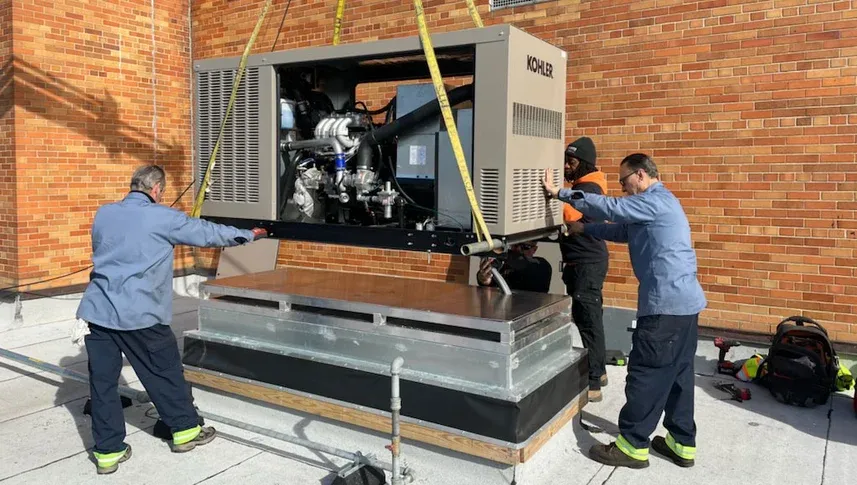Power outages can strike at any time, especially in areas like Riverside County, CA, where storms, grid maintenance, or high energy demand can interrupt electricity. For homeowners, having a reliable backup power source is essential. This is where professional generator installation comes in. A well-installed generator ensures your home stays powered during emergencies, protecting your appliances, security systems, and comfort.
If you’re considering backup generator installation or looking for a trusted generator installation service in Riverside County, this step-by-step guide will walk you through the process, from planning to final testing.
Why Choose Professional Generator Installation Service?
While some might consider a DIY approach, generator installation requires specialized knowledge to meet safety codes and manufacturer requirements. Professional installation ensures:
- Proper sizing of the generator based on your home’s power needs
- Safe and compliant electrical connections
- Correct placement for ventilation and noise reduction
- Permitting and inspections required by Riverside County authorities
- Reliable automatic transfer switch installation for seamless power transition
Hiring a certified electrical contractor or generator installation service reduces risks and guarantees peace of mind.
Step 1: Assess Your Power Needs
The first step in any backup generator installation is determining how much power your home requires during an outage. A thorough assessment involves:
- Listing essential appliances and systems (refrigerator, HVAC, lights, medical devices, etc.)
- Calculating total wattage demand
- Considering future power needs or home upgrades
This step helps choose the right size and type of generator, whether it’s a portable unit or a whole-house standby generator.
Step 2: Choosing the Right Generator
There are two main types of generators commonly used in residential settings:
- Portable Generators: Smaller, less expensive units suitable for powering a few essentials. However, they require manual setup and refueling.
- Standby Generators: Permanently installed units connected directly to your home’s electrical system and fuel supply (usually natural gas or propane). These start automatically during outages.
In Riverside County, standby generators are popular for their convenience and reliability, especially for homes that experience frequent power interruptions.
Step 3: Site Evaluation and Permitting
Before installation, the generator installation service will perform a site evaluation to determine:
- Ideal generator placement to comply with local zoning and noise regulations
- Accessibility for maintenance and fuel delivery
- Distance from windows, doors, and vents to prevent carbon monoxide buildup
Riverside County requires permits for backup generator installation, including electrical and building permits. A professional service handles this paperwork, ensuring your installation meets county codes.
Step 4: Electrical System Preparation
Proper integration with your home’s electrical panel is crucial. An experienced electrical contractor will:
- Install an automatic transfer switch (ATS) that detects power outages and switches your home to generator power seamlessly
- Upgrade your electrical panel if necessary to handle the additional load
- Ensure all wiring and connections meet the National Electrical Code (NEC) and local regulations
This step ensures your generator can safely supply power to critical circuits without overloading the system.
Step 5: Fuel Connection and Installation
Standby generators typically run on natural gas or propane. The installation team will connect the generator to your fuel source, ensuring:
- Safe and leak-proof connections
- Compliance with fuel regulations
- Proper ventilation around the generator to avoid hazards
If you don’t have a natural gas line, propane tanks can be installed on-site for backup fuel.
Step 6: Testing and Commissioning
Once installed, the generator installation service will thoroughly test the system to:
- Confirm automatic startup and shutoff during simulated outages
- Verify the proper function of the transfer switch and electrical connections
- Check for any leaks, noise issues, or operational problems
They will also walk you through operating procedures and maintenance recommendations.
Step 7: Regular Maintenance and Support
Generator installation is just the beginning. Routine maintenance is essential to keep your backup generator reliable, especially in Riverside County’s climate. Maintenance services include:
- Oil and filter changes
- Battery checks
- Fuel system inspections
- Load testing
Many installation companies offer maintenance plans to keep your system in top condition year-round.
Conclusion
Investing in a professionally installed backup generator is a smart decision for homeowners in Riverside County, CA. It provides peace of mind knowing your home will remain powered during outages, protecting your family and valuable property.
By choosing a qualified generator installation service, you ensure proper sizing, safe installation, and compliance with local codes with the help of Sargent Electric Co. From site evaluation to ongoing maintenance, expert support keeps your generator ready when you need it most.
FAQs
How much does residential generator installation cost in Riverside County?
Costs vary depending on generator size, type, and installation complexity. Typically, a standby generator installation ranges from $5,000 to $15,000 including equipment and labor.
Can I install a generator myself?
While some portable generators are DIY-friendly, standby generator installation requires licensed professionals due to electrical, fuel, and permitting complexities.
How often should I maintain my backup generator?
It’s recommended to have a professional inspection and maintenance at least once a year to ensure optimal performance.
How long does a backup generator run during an outage?
Run time depends on fuel availability. Natural gas generators can run indefinitely if gas supply is uninterrupted. Propane generators will run until the tank is empty.
Is a permit required for generator installation in Riverside County?
Yes, local regulations require permits and inspections. A professional installation service will handle these requirements for you.
